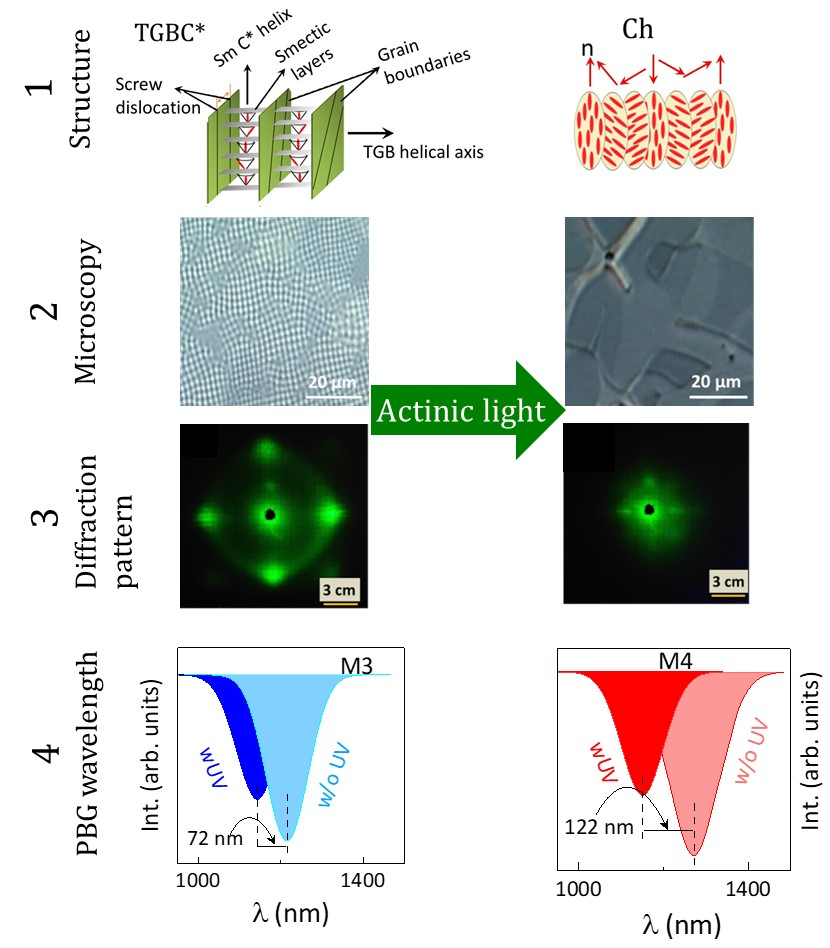Scientists have tuned the disallowed bands of wavelength in liquid crystals by it doping it with a type of organic molecule which are photoactive dimers, introducing properties that can be useful for new generational optical devices.
Owing to their ability to modulate light, there has been growing interest in photonic crystals (PCs) for developing new-generation optical devices. The periodic dielectric structure of PCs gives rise to disallowed bands of wavelength or photonic bandgap (PBG). The bandgap corresponds to the frequencies/wavelengths of electromagnetic radiation that are not transmitted through the material. Among various PBG structures, liquid crystals (LCs), where molecules self-organize into a periodic structure, are gaining attention due to their capability to self-assemble. Liquid systems exhibit PBG structures in two phases—namely the cholesteric (Ch) phase and the twist grain boundary smectic C* (TGBC*) phase, displaying periodic structures in one and three dimensions, respectively. The PBG properties of these systems can be easily altered by external stimuli like temperature, doping with nanoparticles, etc.
Scientists from the Centre for Nano and Soft Matter Sciences (CeNS), an autonomous institute under the Department of Science & Technology (DST), have demonstrated the impact of ultraviolet light on the one-dimensional and three-dimensional PBG features of the LC systems.
By incorporating small amounts of guest photoactive organic compounds with a structure containing two identical or similar units (dimers), the wavelength and the width of the PBG in 1 or 3-dimensions could be tuned in the presence of UV light.
The observed feature can find application as a selective wavelength mirror whose wavelength can be optically tuned. Another interesting fact is the memory effect observed in two-dimensional PBG dictated by UV or actinic light, a feature holding promise for memory devices. This research work published in ‘Journal of Molecular Liquids was performed by Rajalaxmi Sahoo, Reshma C., D.S. Shankar Rao, C.V. Yelamaggad, and S. Krishna Prasad.
Publication link: https://doi.org/10.1016/j.molliq.2023.123443

Figure: Structural arrangement (panel 1), polarizing optical microscopy images (panel 2), laser diffraction (panel 3) in the TGBC* and Ch phases. Panel 4 shows the photoinduced shift in 1D PBG for the odd and the even mixture.






























